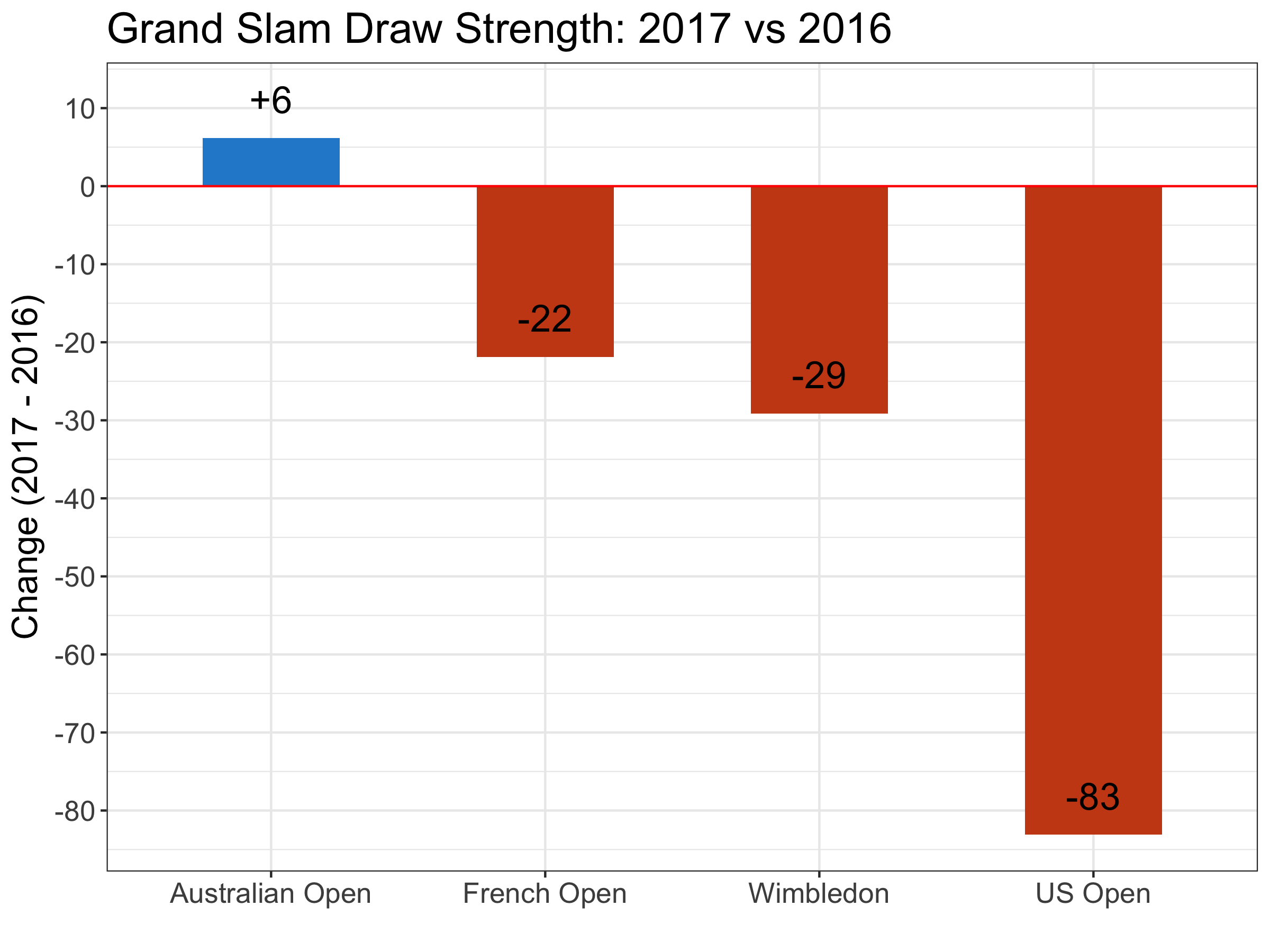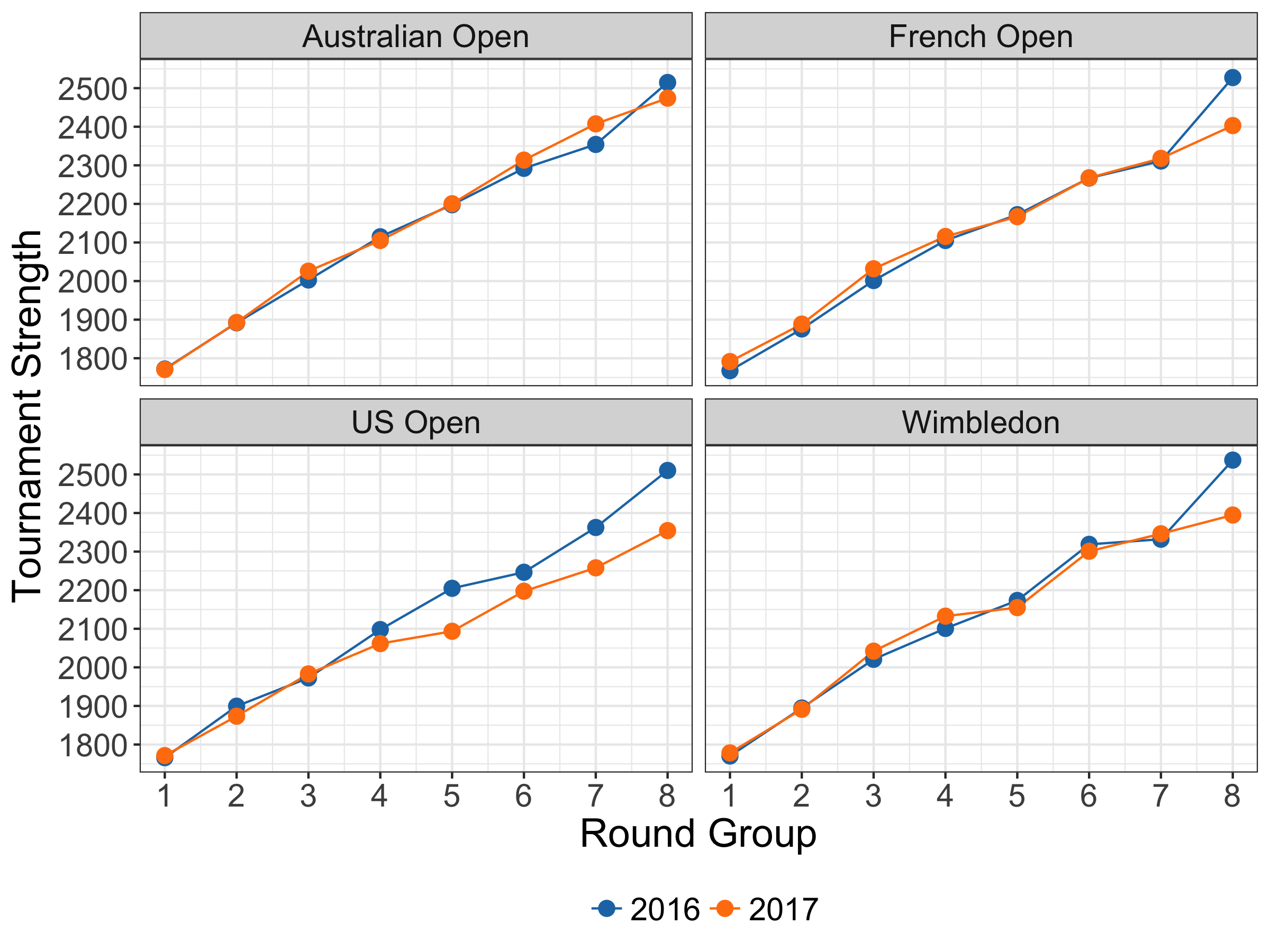Decline of Men's Slam Strength in 2017
Now that the US Open—the last of the four Majors of the tennis calendar—has ended, it is more clear than ever that the 2017 season has been a strange one.
Strange in good and bad ways. One of the less positive ways has been a streak of (at least from a 2016 perspective) ho-hum men’s draws at the Grand Slams. A streak that started with the French Open and continued through the US Open.
Since Roland Garros, every men’s Grand Slam final has been won in straight sets. You have to go back to 2003 to find a similar run of consecutive underwhelming finals.
The final scoreline of the final is one measure of strength but, by considering only one match (even if the most significant one), it is too narrow. Capturing the overall strength of the field at a 128-draw event is more challenging and there is probably no single measure that is a perfect summary of strength. Still, I put forward a ‘tournament strength’ stat a few weeks ago that I think is useful.
This measure of tournament strength looks at the highest Elo rating among players expected to exit at the same stage, from the first round to the hoisting up the title trophy on the final Sunday. I then take a weighted average of the peak Elo’s in each round, weighting the final stages more heavily. In this way, the strength focuses on the best players in each hierarchy of the draw that reflects the structure of the event, while emphasizing the later rounds where tougher contests are expected.
Slam Strength Decline
Using the tournament strength stat, we can compare the overall quality of the men’s fields in 2017 compared to 2016. The chart below shows that the year started off well as the Australian Open field was actually slightly higher than in 2016, according to the pre-event Elo ratings of the competitors. After that point, things took a nosedive.

In contrast to 2016, there was a progressive decline in draw quality from the French Open through the US Open. By the time the tour got to late August and multiple top players had checked out of the rest of the season, the US Open strength was down more than 80 points. On an Elo scale that drop equates to a 10 percentage point loss in win advantage.
We can breakdown the round-by-round peak Elos to get a better idea of the source of these declines. In the chart below, ‘1’ refers to the Elo of the bottom 64 of the draw and ‘8’ is the Elo of the expected winner. For any particular event, we can see where the 2016 (in blue) and 2017 (in gold) diverge to determine the group of 2017 players that contributed most to the change in the draw strength.

For the French Open and Wimbledon, it is interesting to see that the change was largely due to the form of the expected winner. And, when we look at who was at the top of the game in 2016, we can attribute these dips to the 2017 decline of Novak Djokovic; Djokovic being the most highly rated player (based on an all-surface Elo) at every Grand Slam in 2016. In 2017, Djokovic steadily lost his 2016 edge and no other player found a way to equal his 2016 heights.
The US Open stands out among events by diverging from the 2016 event strength much earlier: specifically, by the 4th round. It is the only event that has a negative gap between 2017 and 2016 for three rounds or more. This backs up claims that the bottom half of the draw fell out in the first week and a general feeling that the play in the second week was only intermittently inspired.
The quality of competition in every sport goes through cycles. The end of 2017 seemed to signal a low ebb for men’s tennis. If true, we can hope that the tides will shift again come January and make 2018 a season of resurgence.
Come back next week when I’ll take a look at the tournament strength trends in the women’s game.
The code and data for this post can be found here.

